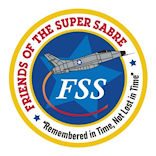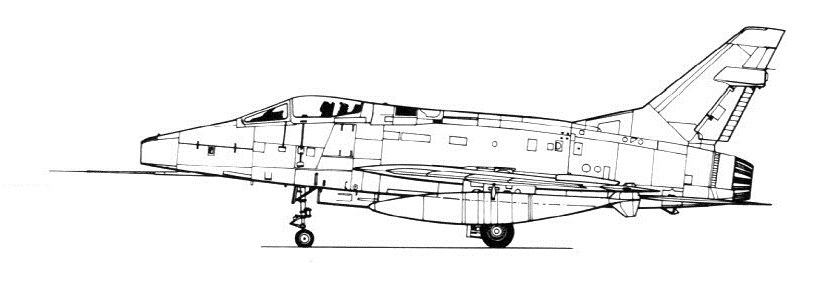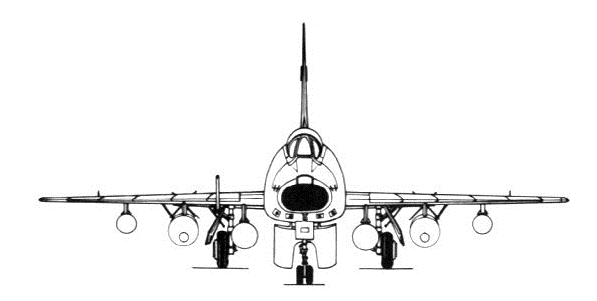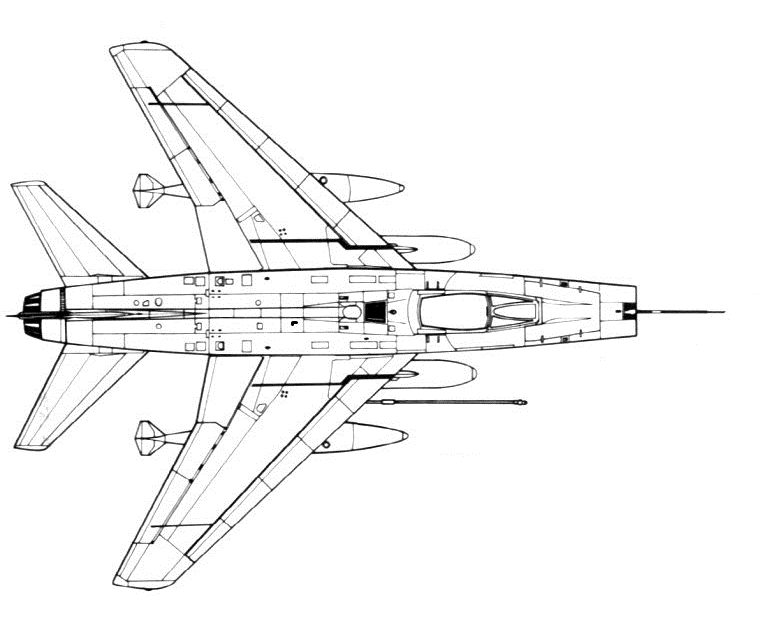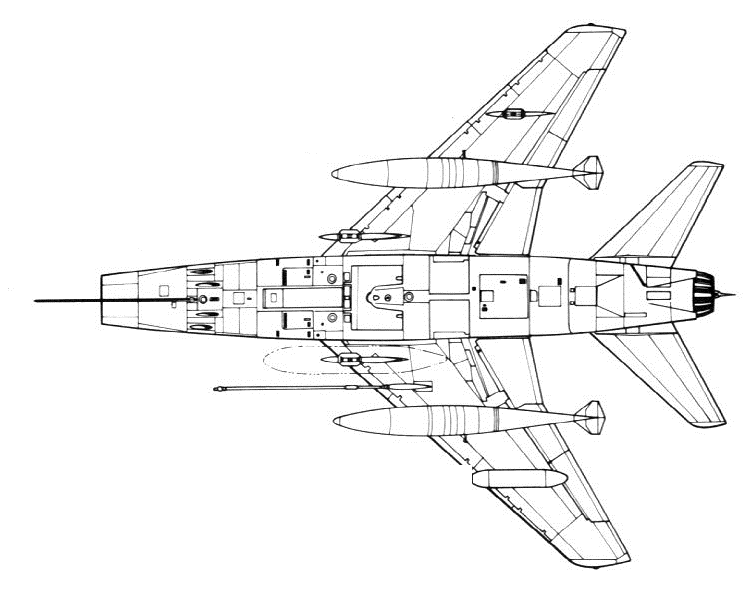The North American F-100 Super Sabre was the first supersonic fighter. The first YF-100A prototype with its 45 degree swept back wing and afterburning engine exceeded the speed of sound on its first flight on May 25, 1953. The Super Sabre was affectionately known as The Hun (for Hundred). Its first roll was a day fighter, but later versions included wing mounted munitions for the ground attack roll and nuclear weapons. The bird sat nuclear alert in Europe for several years. It was the first fighter/bomber to fly combat in Vietnam and flew 360,283 combat sorties…more than all other fixed wing aircraft in Vietnam. The Hun proved its durability, dependability, capability, and suitability in its primary mission of ground support. A real “WAR HORSE” throughout its 45 years of service.
The 45 degree wing sweep and many other design features permitted the first supersonic flight, but also created flight control issues. The first A models had a shorter tail and did not provide enough rudder control at high angles of attack. The 45 degree wing sweep also caused adverse yaw, which caused the jet to roll in the opposite direction than what was intended by the unaware pilot. Adverse yaw occurred at high angles of attack from the drag created by the downward aileron while the upward aileron reduced drag on that opposite side of the aircraft. This excess drag caused the aircraft to yaw opposite of the intended roll direction and the 45 degree sweep wing on the inside of the intended turn to create more lift than was generated by the ailerons. The most effective way to roll the aircraft at high g and angle of attack was to keep the ailerons centered and use rudder to yaw the aircraft in the direction of the intended roll.
The famous Sabre Dance occurred if the pilot pitched the nose too high during takeoff or landing. The wingtips would stall and the center of gravity would move forward, thus causing the nose to pitch even higher aggravating the wing stall. Inertial coupling would cause the aircraft to yaw to the left or right and was unrecoverable. A Sabre Dance of First Lieutenant Barty Brooks on January 10, 1956 was caught on film.
Despite these adverse handling characteristics, the F-100 was loved by its pilots. They took great pride in being able to maneuver the jet at max performance. The comradery of these pilots still exists today in the Super Sabre Society and the Friends of the Super Sabre organizations.
